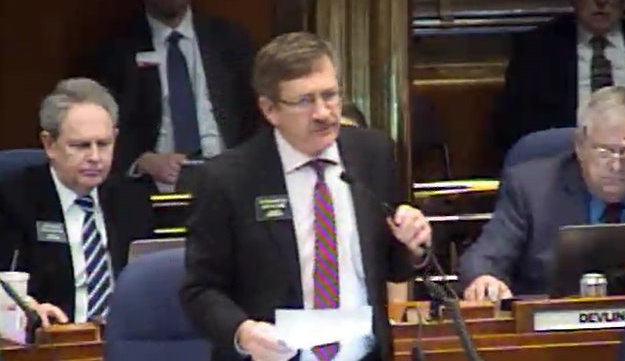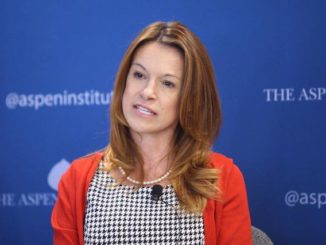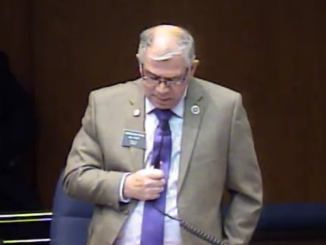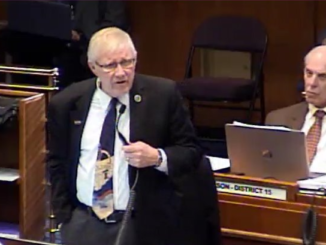
I’m guessing there may be some unhappy taxpayers in the area known as School District #8 today. The North Dakota House passed House Bill 1434 by a vote of 73-19 this afternoon. This bill is sponsored by a newcomer to the State Legislature, Rep. David Richter (R – District 1). It seeks to make changes to existing law by allowing a school district to dissolve and absorb into “other operating high school districts in the same county, or to a non high school district in the same county if there are no high school districts in the same county adjacent to the district being dissolved.”
In a nutshell, the one district can dissolve without the approval of the district absorbing them— a fact quickly pointed out by Rep. Ben Koppelman (R – District 16), who opposed the bill.
As explained in the floor debate, this bill came into being as a result of problems surrounding Williston Public School District #1 and Williams County Public School District #8. District #1 is literally surrounded by District #8— as you can see by this map from the Department of Public Instruction. The Bakken Oil Boom has brought significant growth to the area, but with that growth has come challenges.
While District #1 encompasses a much smaller area (15 square miles), it educates 4,350 K-12 students compared to District #8’s total of 640 K-8 students. Yet, District #1 has a taxable valuation of $120 million and District #8’s is $150 million. This means that District #8 enjoys lower property taxes than their neighbors in District #1.
Now, to be fair, this bill doesn’t mean that a dissolving and absorption will take place, but it certainly sets the table for exactly that to happen. And it can all be done without the taxpayers — most especially the property owners — in District #8 having a say about it. As Rep. Denton Zubke (R – District 39) admitted when he carried this bill to the floor for debate, such an absorption would most certainly result in substantial increases to property taxes for those in District #8.
This bill is yet another example of the problems associated with the state not meeting its constitutional obligation to fully fund K-12 education. On the one hand, we have people from neighboring school district’s pitted against one another— District #8 has resisted absorbing District #1. And now on the other, we have the state working to force District #8 to accept the absorption.
If the truth is told, this again exposes the state as anything but honest. Where is the long-promised property tax relief for all involved in this situation? District #1 certainly hasn’t seen it. District #8 certainly won’t have any if this bill passes.
What about local control? We hear it spewed all the time. And as I’ve pointed out on a number of occasions recently, it’s a myth. And this is just another example of it.
There’s no question that District #1’s challenges are real. But the North Dakota House’s solution for them to plunder their neighbors in District #8 is simply awful. The State of North Dakota has all the resources — and then some — to fully fund K-12 education in this state. They wield all the constitutional power over it anyhow, so they should “provide” for it all too.
Besides, let’s not forget that all those resources that the state could fully fund education with came from all of us anyhow. We need a Revolution of sorts in this state and this is just one more example of why.
PLEASE LIKE & SHARE!
Sources:
- https://www.legis.nd.gov/assembly/66-2019/bill-index/bi1434.html
- https://www.legis.nd.gov/assembly/66-2019/bill-video/bv1434.html
- http://www.willistonschools.org/
- https://www.district8nd.com/
- https://www.nd.gov/dpi/uploads/171/map.pdf





